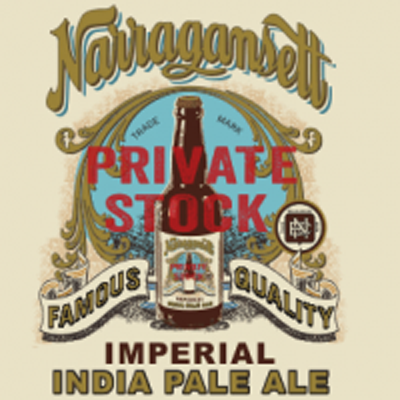I am drinking a lot more of my beer in bombers these days. There are a number of reasons, and only a few of them relate to the fact that writing this column requires that I drink a wide variety of beers.
Bombers are 22-ounce bottles that usually come with a traditional bottle cap that has to be pried open with a bottle opener. They are more common in North America, with Europeans using a 750-milliliter or 25.36 ounces.
Many brewers put their specialty brews into bombers rather than 12-ounce bottles, and for some smaller brewers such as Rising Tide, bombers are the predominant bottles for their beer.
Gritty McDuff’s, for example, bottles bombers at its Freeport brewery but has its 12-ounce bottles done at Shipyard. The bombers are unfiltered, which gives them a little bit of extra flavor.
Shipyard puts most of its beer in 12-ounce bottles, but its Pugsley Signature Selection, the more unusual and extreme beers, comes in bombers. The same is true for Boston Beer Co., brewer of the Samuel Adams lineup of beers.
So if you are shopping in a beer store or even a supermarket and want something unusual, check out the place where the bombers are displayed.
While writing this column, I have been waiting for my winter cold/flu to depart so I can taste properly the following bombers: The Vermonster from Rock Art Brewery in Morrisville, Vt.; Sofie from Goose Island in Chicago; three Samuel Adams specialty beers (Tasman Red, Verloren and Dark Depths); and a Lion Stout from Sri Lanka, although that actually has only 21.3 ounces.
For a beer columnist, the bomber has one major advantage: You have to buy only one of them. When I do a tasting of several beers, it can take a couple of months to drink the left-over beers once the tasting is done. That means they are taking up storage space that should be used for beers that are coming in the future.
But 22 ounces is a convenient size for a beer even if you are not a beer columnist.
The most common size of beer bottles is 12 ounces, although a lot of European brewers have been sneakily switching to 11.2-ounce bottles, thinking that beer drinkers will not miss that two-thirds of an ounce in every bottle.
So, if you consider 12 ounces as a serving of beer, you get almost two servings in a bottle. It is enough to share.
Most bars, however, serve beer in pint glasses. Which means you would have 6 ounces of beer after filling the pint glass from a bomber. Some bars serve talls, which are 22-ounce glasses, and that comes out perfectly.
But I am not sure all of that matters. Many people have more than one beer at a time, so a serving is what you want to drink — within the bounds of sobriety.
THE BOMBER I tasted most recently was Narragansett Private Stock India Pale Ale.
Spurred originally by nostalgia of growing up with ‘Gansett in 1950s and ’60s Maine, I have been a big fan of the revived Narragansett.
The flagship lager is better than most of the light American lagers being brewed today, and their specialty beers — Bock, Porter, Summer and Cream — have been downright outstanding.
The Imperial IPA was a disappointment, however. It poured a nice dark amber with a good stiff head. But the bitterness of the hops just slammed the palate. I couldn’t taste anything else.
I admit that I am not a fan of big-hopped beers, but I usually can understand how the hops balances against the other ingredients.
But this was just big hops coupled with big alcohol, at 8.6 percent.
I thought maybe my illness was throwing off the palate, so when son Zachary posted that he had tasted this — while actually in Narragansett, R.I. — I asked what he thought, and he agreed entirely. Which means you can’t get a hit every time.
I’m still looking forward to the next selection in the Private Stock series — an 8.6-percent alcohol Bohemian Pilsner.
I’m sure ‘Gansett will redeem itself.
Tom Atwell is a freelance writer living in Cape Elizabeth. He can be contacted at 767-2297 or at:
tomatwell@me.com
Copy the Story Link
Send questions/comments to the editors.



Success. Please wait for the page to reload. If the page does not reload within 5 seconds, please refresh the page.
Enter your email and password to access comments.
Hi, to comment on stories you must . This profile is in addition to your subscription and website login.
Already have a commenting profile? .
Invalid username/password.
Please check your email to confirm and complete your registration.
Only subscribers are eligible to post comments. Please subscribe or login first for digital access. Here’s why.
Use the form below to reset your password. When you've submitted your account email, we will send an email with a reset code.